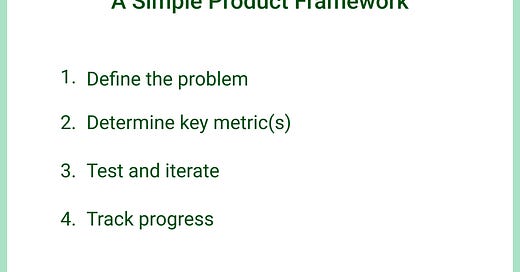Did someone share this newsletter with you? If so, consider subscribing. It’s free, weekly, and will improve your hiring outcomes.
🤿 Deepening the Pool 🤿
One of the common themes around here is that ‘Hiring is Sales Now,’ but another, less explicit theme, is ‘Your hiring process is a product.’
In this post, I’ll discuss a real-life situation where a client and I used a basic product development framework to identify a problem, determine which metrics to focus on, test ideas, and track our progress. As a result, we increased the candidate pool for every job we posted.
The Appeal of a Job Description
I’ve written about job descriptions before. Specifically, I’ve argued that we should think of job descriptions as marketing copy.
But how do you know if you are writing an appealing job description?
One of my clients had this problem. This client is an agency representing high-end, technically skilled software engineers. Essentially this company matches technical engineers with organizations that need them.
One day, the head of the developer relations team, let’s call him ‘David’ and I were catching up. He was concerned because many of the jobs posted on the platform weren’t getting as many applicants as he needed. Specifically, 30% of the posted jobs weren’t getting five or more candidates 24 hours after posting. This meant that David and his team had to work with a shallower candidate pool to find the right fit.
A Simple Product Process
Now’s a good time to point out that David and I were already in a product development conversation.
He had already:
Defined a problem - “Some of our job posts aren’t getting many interested applicants, which means that we don’t have a large pool of talented candidates to represent for these jobs.” And,
Quantified the problem (and a solution) - “Percentage of job posts with five or fewer applicants 24 hours after posting” seemed to work pretty well.
All that was left was for us to:
Test possible solutions, learn, and iterate.
Determine if we were solving the problem by paying attention to our metrics and tracking our progress.
The Outcome
I’m happy to report that weeks later, we have significantly moved our “Percentage of job posts with five or fewer applicants 24 hours after posting” metric from 30% to less than 10%. This won’t surprise regular readers, but we did this by keeping descriptions brief and ensuring we answered “Why would a talented person want to work on this project?” in every job post.
David is happier because he always has a deep candidate pool for almost every post, and I’m pleased because, as a result of having more talent, the sales team is closing more deals.
Even the basics can take you far
One of the frustrating aspects of “The Great Resignation” is that it has normalized a victim-like, reactive attitude towards the labor market amongst hiring managers (better known as the “People don’t want to work anymore” crowd).
It would have been easy for David to say that 30% of the jobs we post won’t have enough candidates. But he didn’t. He took thoughtful action. The most significant benefit of applying a product development framework to your hiring issues is that it encourages proactive thinking. Instead of complaining, you now actively solve your problems.
Will all your ideas be right? No. Will your key metrics move? Not always. But you will eventually improve your situation by taking a discrete, objective, and data-driven approach to solving your problem rather than blaming outside forces.




